Image Gallery: Hurricane Season 2013
Tropical Storm Andrea
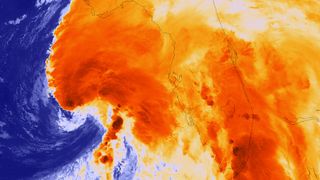
Tropical Storm Andrea was spotted by the Suomi NPP satellite as it passed overhead during the night from June 6-7, 2013, as the storm moved towards landfall on the Florida peninsula.
Tropical Storm Barry
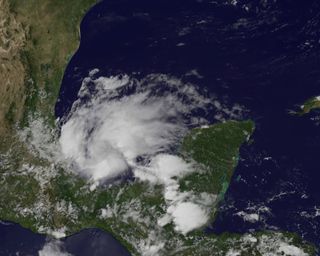
NOAA's GOES-13 satellite captured a visible image of Tropical Storm Barry just after it became a tropical storm on June 19, 2013, in the Bay of Campeche. Barry initially formed as a tropical wave in the Caribbean Sea, then traveled over the Yucatan Peninsula, bringing drenching rains. It made its second landfall over Veracruz, Mexico, on June 20.
Tropical Storm Chantal
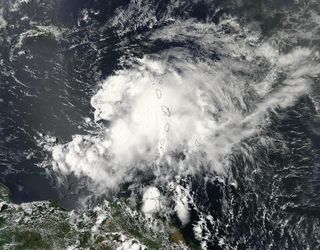
NASA’s Terra satellite captured this stunning visible image of Tropical Storm Chantal over the Lesser Antilles on July 10, 2013. Chantal dumped rain on the island of Hispaniola, causing flooding.
Tropical Storm Dorian

This night-time, infrared image of Tropical Storm Dorian was taken from the VIIRS instrument aboard the Suomi-NPP satellite on July 25, 2013. The red and purple colors represent the storm's coldest cloud tops, or it's highest thunderstorms, which were also its strongest.
Tropical Storm Erin
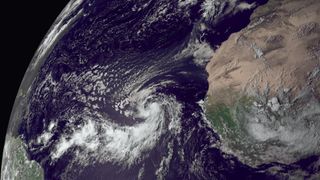
Newly formed Tropical Storm Erin was spotted by the Meteosat 9 satellite on Aug. 15, 2013, when it was bout 150 miles (240 kilometers) southwest of the Cape Verde islands.
Tropical Storm Fernand

The GOES-East satellite snapped this image of Tropical Storm Fernand at 7:45 a.m. EDT on Aug. 26, and shows how the storm expanded after making landfall before quickly dissipating.
Tropical Storm Gabrielle
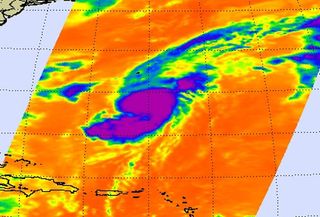
NASA's Aqua satellite passed over the resurrected Tropical Storm Gabrielle on Sept. 10 at 0559 UTC/1:59 a.m. EDT and detected cloud-top temperatures of powerful thunderstorms (purple).
Sign up for the Live Science daily newsletter now
Get the world’s most fascinating discoveries delivered straight to your inbox.
Hurricane Humberto
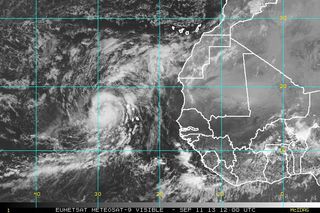
Hurricane Humberto appears as a characteristic swirl in the Eastern Atlantic on the morning of Sept. 11, 2013. Humberto was the first hurricane of the 2013 season and narrowly missed being the latest-forming hurricane on record (a title held by 2002's Hurricane Gustav, which formed three hours later than Humberto on Sept. 11 of that year).
Hurricane Ingrid

NASA's TRMM satellite flew over Hurricane Ingrid in the Gulf of Mexico on Sept. 16, 2013. It's precipitation measurements showed that rain was falling from the storm at a rate of about 4 inches (100 millimeters) per hours. The storm caused significant flooding and landslides along the Gulf coast of Mexico.
Tropical Storm Jerry
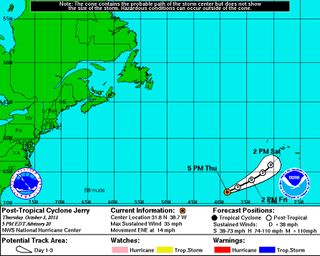
After Tropical Storm Jerry weakened into a tropical depression, it dissipated over the eastern Atlantic. This was the last forecast path issued by the National Hurricane Center for the storm.
Tropical Storm Karen over the Gulf Coast as viewed by the GOES-1 satellite on Oct. 4.

Tropical Storm Karen over the Gulf Coast as viewed by the GOES-East satellite on Oct. 4.

Andrea Thompson is an associate editor at Scientific American, where she covers sustainability, energy and the environment. Prior to that, she was a senior writer covering climate science at Climate Central and a reporter and editor at Live Science, where she primarily covered Earth science and the environment. She holds a graduate degree in science health and environmental reporting from New York University, as well as a bachelor of science and and masters of science in atmospheric chemistry from the Georgia Institute of Technology.
Most Popular


